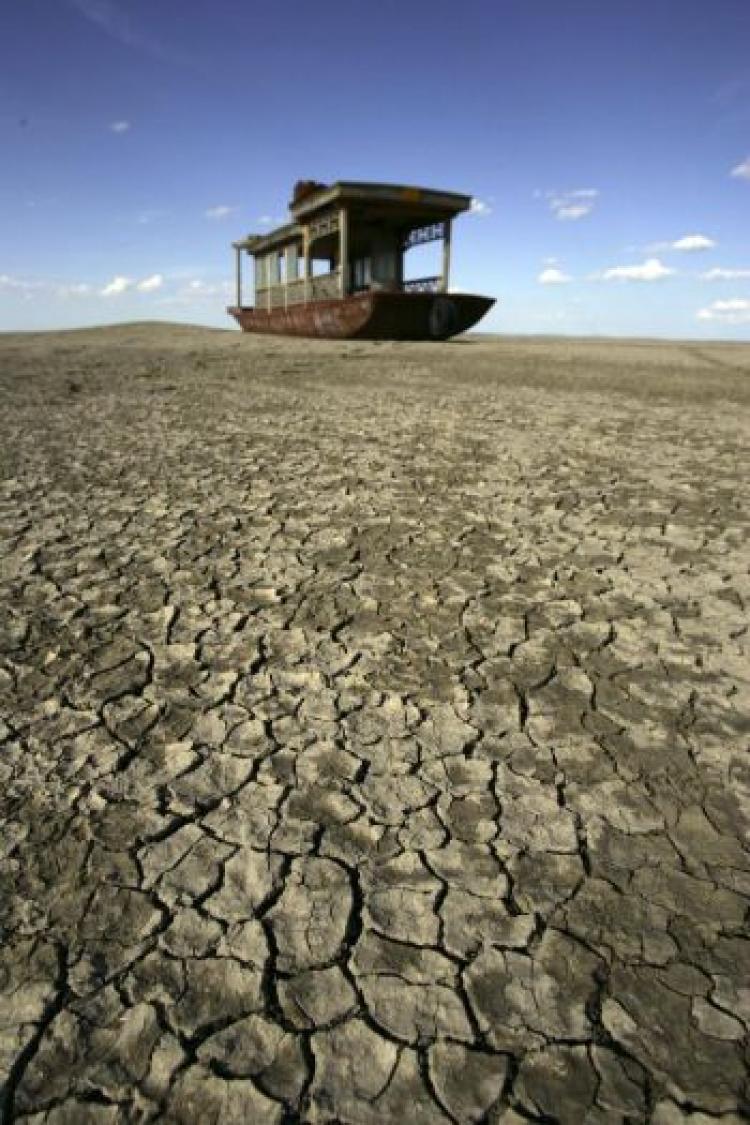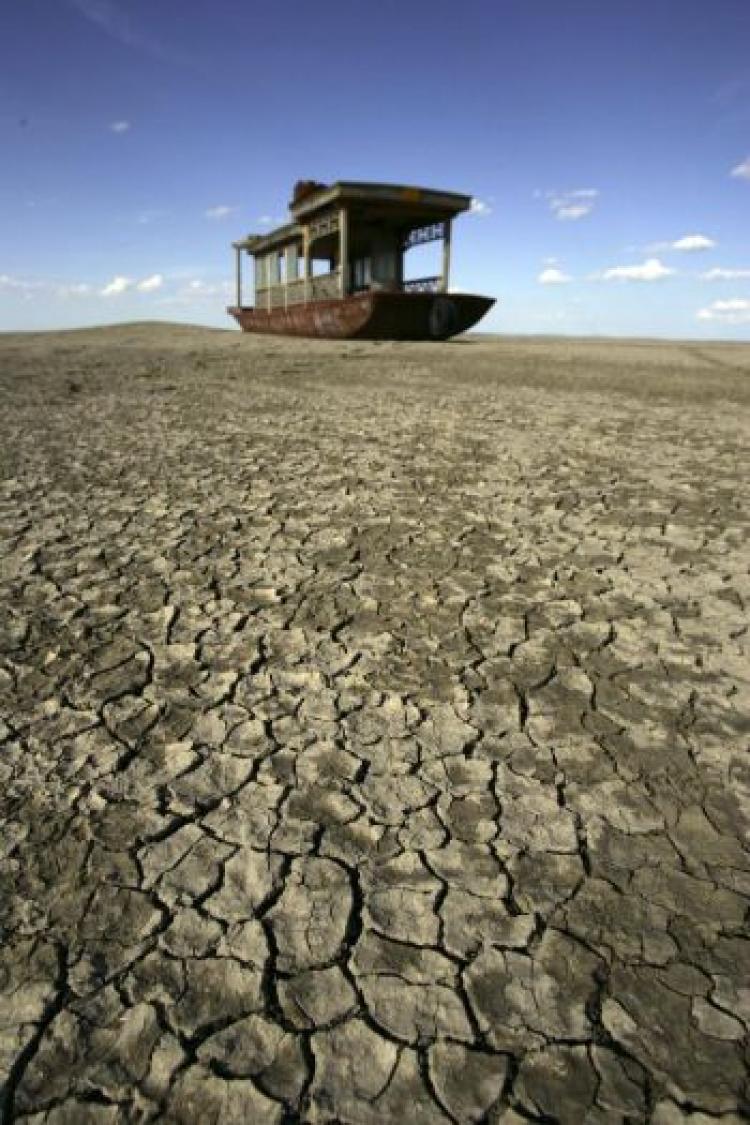The growth of Beijing’s population is stretching its water resources to their limits, forcing officials to look further afield to surrounding provinces.
The Beijing Political Consultative Committee, which handles municipal affairs, recently reported that in 2009, the population in Beijing reached 19.72 million people; it continues to grow at a rate of 543,000 people per year.
“The rapid growth of the population and expansion of the city is the main reason leading to the water shortage in Beijing City,” says Wang Jian, an expert who worked for the Beijing Environment Protection Bureau researching Beijing’s water resources problem, in an interview with Business China.
In order to help supply water to Beijing, the two nearby cities of Zhangjiakou and Chengde have already begun planting corn instead of rice in an attempt at water conservation.
The current average water usage per capita in Beijing is 210 cubic meters (7,614 cubic feet), one tenth of China’s average water usage per capita, and one fortieth of the world average.
Miyun and Guanting reservoirs, located north of Beijing, used to be the city’s major water sources, with a joint capacity of over 4 billion cubic meters (14.1 billion cubic feet). Throughout the 1990s, however, Guanting became seriously polluted, and in 1997 was withdrawn from the city’s drinkable water supply; Beijing was left with only the Miyun. According to the Ministry of Water Resources, the current storage capacity of Minyun reservoir is only 770 million cubic meters (27.2 billion cubic feet).
Now with a limited supply of groundwater, Beijing depends on the pumping of deep-ground-water, which rapidly drains the water table.
“When compared to the 1960s, Beijing’s groundwater has decreased 10.6 billion cubic meters (374.5 billion cubic feet),” said Wang Jian. “This leads to land subsidence which will bring a series of problems. For example, one third of the underground piping that has broken down is related to this.”
Under such circumstances Beijing has sought help from its neighbor, Hebei Province.
Since 2008, after the intervention of the State Council, three large reservoirs—Gangnan, Huangbizhuang and Wangkuai—began piping 264 million cubic meters (9.3 billion cubic feet) of water annually to Beijing.
“All the local rice planting has been replaced with corn in Zhangjiakou and Chengde city. Beijing provides a certain subsidy to the local farmers,” said Wei Zhimin, senior engineer and consultant of Hebei Provincial Drought Prevention and Flood Control Office. “This project makes it possible to provide a large quantity of water to Beijing.”
However, Hebei Province also lacks water and may not be any better off than Beijing. Wei indicated that Hebei has a shortfall of nearly 8 billion cubic meters (285.5 billion cubic feet).
Hebei’s average per capita capacity is 192 cubic meters (6,780 cubic feet), a number even lower than Beijing’s. To make up the deficit, Hebei Province must work more on its ground water and cross province water transmission; every year the province receives water from the Yellow River in Shandong Province.
Beijing and Hebei’s problems reflect a greater water resource dilemma throughout all of China. According to a Guangming Daily report, there are two major issues: water shortage and pollution, both of which exacerbate droughts.
At the end of 20th century, of among over 600 cities in China, more than 400 had insufficient water supply while 110 had serious supply issues. China’s total water shortage is around 6 billion cubic meters (212 billion cubic feet), equivalent to about the water supply of New York City for three years.
Read the original Chinese article.
The Beijing Political Consultative Committee, which handles municipal affairs, recently reported that in 2009, the population in Beijing reached 19.72 million people; it continues to grow at a rate of 543,000 people per year.
“The rapid growth of the population and expansion of the city is the main reason leading to the water shortage in Beijing City,” says Wang Jian, an expert who worked for the Beijing Environment Protection Bureau researching Beijing’s water resources problem, in an interview with Business China.
In order to help supply water to Beijing, the two nearby cities of Zhangjiakou and Chengde have already begun planting corn instead of rice in an attempt at water conservation.
The current average water usage per capita in Beijing is 210 cubic meters (7,614 cubic feet), one tenth of China’s average water usage per capita, and one fortieth of the world average.
Miyun and Guanting reservoirs, located north of Beijing, used to be the city’s major water sources, with a joint capacity of over 4 billion cubic meters (14.1 billion cubic feet). Throughout the 1990s, however, Guanting became seriously polluted, and in 1997 was withdrawn from the city’s drinkable water supply; Beijing was left with only the Miyun. According to the Ministry of Water Resources, the current storage capacity of Minyun reservoir is only 770 million cubic meters (27.2 billion cubic feet).
Now with a limited supply of groundwater, Beijing depends on the pumping of deep-ground-water, which rapidly drains the water table.
“When compared to the 1960s, Beijing’s groundwater has decreased 10.6 billion cubic meters (374.5 billion cubic feet),” said Wang Jian. “This leads to land subsidence which will bring a series of problems. For example, one third of the underground piping that has broken down is related to this.”
Under such circumstances Beijing has sought help from its neighbor, Hebei Province.
Since 2008, after the intervention of the State Council, three large reservoirs—Gangnan, Huangbizhuang and Wangkuai—began piping 264 million cubic meters (9.3 billion cubic feet) of water annually to Beijing.
“All the local rice planting has been replaced with corn in Zhangjiakou and Chengde city. Beijing provides a certain subsidy to the local farmers,” said Wei Zhimin, senior engineer and consultant of Hebei Provincial Drought Prevention and Flood Control Office. “This project makes it possible to provide a large quantity of water to Beijing.”
However, Hebei Province also lacks water and may not be any better off than Beijing. Wei indicated that Hebei has a shortfall of nearly 8 billion cubic meters (285.5 billion cubic feet).
Hebei’s average per capita capacity is 192 cubic meters (6,780 cubic feet), a number even lower than Beijing’s. To make up the deficit, Hebei Province must work more on its ground water and cross province water transmission; every year the province receives water from the Yellow River in Shandong Province.
Beijing and Hebei’s problems reflect a greater water resource dilemma throughout all of China. According to a Guangming Daily report, there are two major issues: water shortage and pollution, both of which exacerbate droughts.
At the end of 20th century, of among over 600 cities in China, more than 400 had insufficient water supply while 110 had serious supply issues. China’s total water shortage is around 6 billion cubic meters (212 billion cubic feet), equivalent to about the water supply of New York City for three years.
Read the original Chinese article.






Friends Read Free